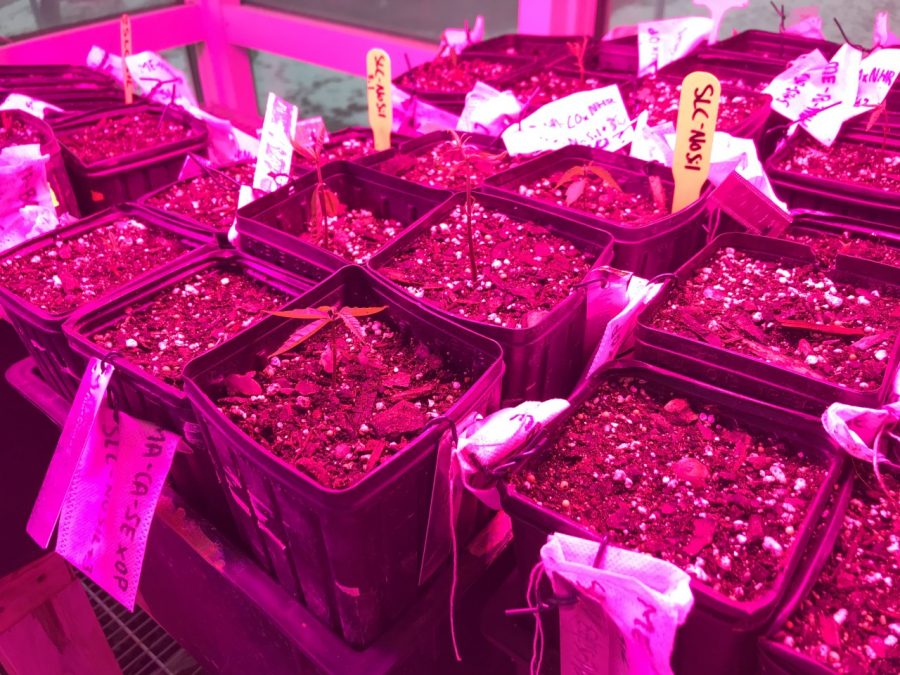The American Chestnut Ecological Restoration
The American Chestnut seedlings in their pots
February 17, 2020
On February 3, 2020, the University of New England’s Environmental Class 309 dedicated a class period to planting about 450 American Chestnut seeds. In conjunction with our environmental science professor, we are helping a restoration project to restore the American Chestnut in Maine.
The restoration started with filling planters with about 1.5 kg to 2.0 kg of soil and pressing down to ensure that no air pockets were left in the soil. Carefully taking a chestnut out of a teabag, the nut was placed into a one-inch deep hole in the soil with the radicle (the shoot that will become the root) down. A half an inch of soil was then added to cover the nut. On each teabag, a code was found telling where the nut originated. To ensure the nut in the planter was the same as the one from the teabag, a metal tag was written with the same code and attached to the planter. Once a nine-pot tray was completed, the tray was carried from the lab room to the greenhouse down the hall. In the greenhouse, the chestnuts will be watered and will receive warmth and light from solar lights while they wait to be transplanted to their forever home in the coming months.
Why is this restoration so important? If the American Chestnut cannot even sustain itself in the wild, why should anyone care about this tree? There is an old history told by the Chestnut tree. A simpler way of life known as the Appalachian mountain culture.
In August and September, the nuts from these trees fall from more than 50 feet to the forest floor. Deer, bears, birds, and chipmunks move about the understory of these massive trees and reap the delicious and nutritious chestnuts. Along with these animals in the 19th century, families in the Appalachian Mountain range would also collect the nuts from the “money” trees. Chestnuts were exchanged for clothing, shoes, and schoolbooks. The chestnut was also a food source for farmers and their families.
Aside from the economic potential gained from harvesting these nuts, the American Chestnut tree also provides ecological benefits for the forests in which they grow. Due to the tree height, it moderates the local climate and can slow the speed at which rainwater hits the ground, reducing erosion. It is a keystone species essential to the ecosystem for which it provides. If the tree is removed, the ecosystem would undergo a drastic change.
When a fungal disease was accidentally introduced to the United States in the early 20th century, the American Chestnut tree suffered greatly and was reduced to the point of functional extinction. This is when species no longer serve their ecological role, but still exist. The functional extinction of the Chestnut has caused a culture in the Appalachian, which revolved around this tree, to be abandoned.
The ecological, economic, and cultural importance of the American Chestnut tree is the reason why so many people, including my environmental class, have dedicated their lives to finding ways to restore the tree to its former glory.
Being a part of the planting experience, I am eager to see how fast the seedlings grow. The seedlings have already sprouted even though they were planted just two weeks ago. Unfortunately, the class will only see the chestnuts in the greenhouse. The surviving American Chestnuts will be planted in late May or early June once the threat of frost in Maine has passed. The hope of those involved with the restoration project is that these new seedlings will have a better chance at withstanding the fungal blight and will give a new rise to the once glorious American Chestnut trees.



